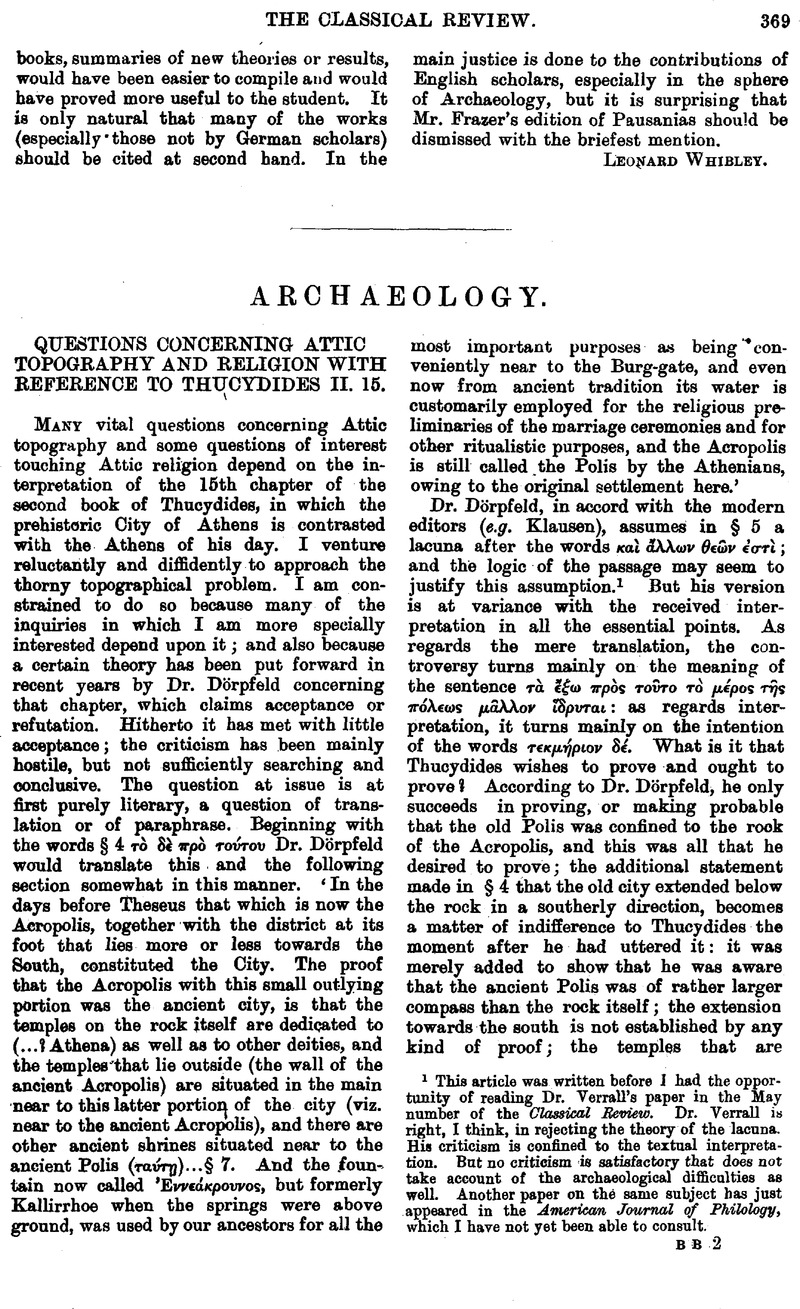No CrossRef data available.
Article contents
Questions Concerning Attic Topography and Religion with Reference to Thucydides II. 15
Published online by Cambridge University Press: 27 October 2009
Abstract

- Type
- Archaeology
- Information
- Copyright
- Copyright © The Classical Association 1900
References
page 369 note 1 This article was written before I had the opportunity of reading Dr. Verrall's paper in the May number of the Classical Review. Dr. Verrall is right, I think, in rejecting the theory of the lacuna. His criticism is confined to the textual interpretation. But no criticism is satisfactory that does not take account of the archaeological difficulties as well. Another paper on the same subject has just appeared in the American Journal of Philology, which I have not yet been able to consult.
page 372 note 1 Dr. Verrall, in his article in the May number of the Classical Review, misunderstands the point in saying ‘that Athens should have contained more than one such sanctuary (of Zens Olympios), and more than one Pythion, is as little surprising as that in a mediaeval city there should be more than one church of St. Mary.’ The analogy would only suggest that there might be several temples of Apollo in Athens. We know that there were. What we want is evidence or analogy for the theory that there were several temples there of Apollo Pythios.
page 372 note 2 The lightning was a sign sent to the Pythion in Athens that the god was ready to receive the Athenian θεωρ⋯α, and the holy procession started thereupon.
page 373 note 1 L. 299: the words τῇ Γῇ which follow in the MS. are evidently an interpolation; the scholiast's comment proves that he read τῇ κουροτρ⋯φϕ merely and was not sure about the proper name.




